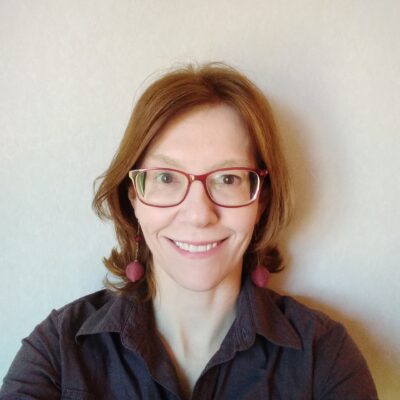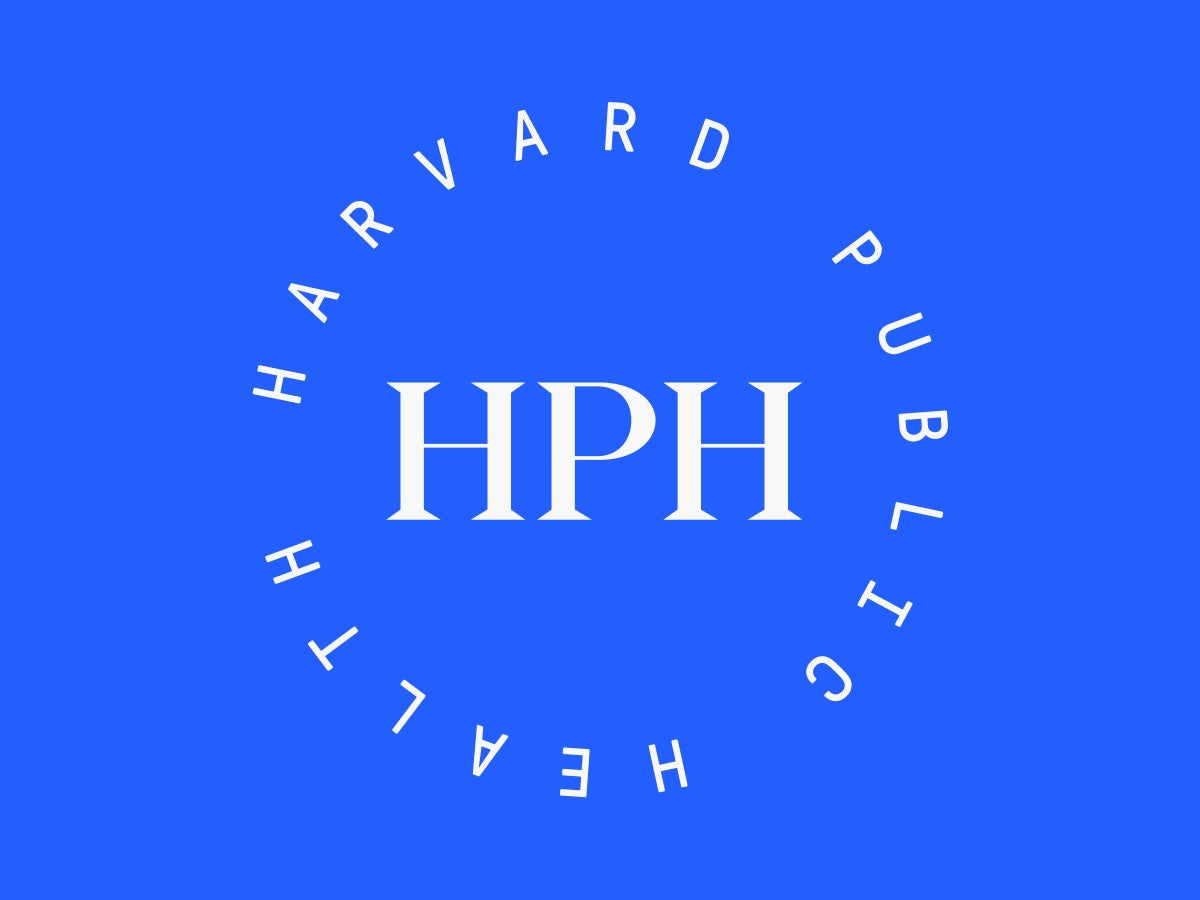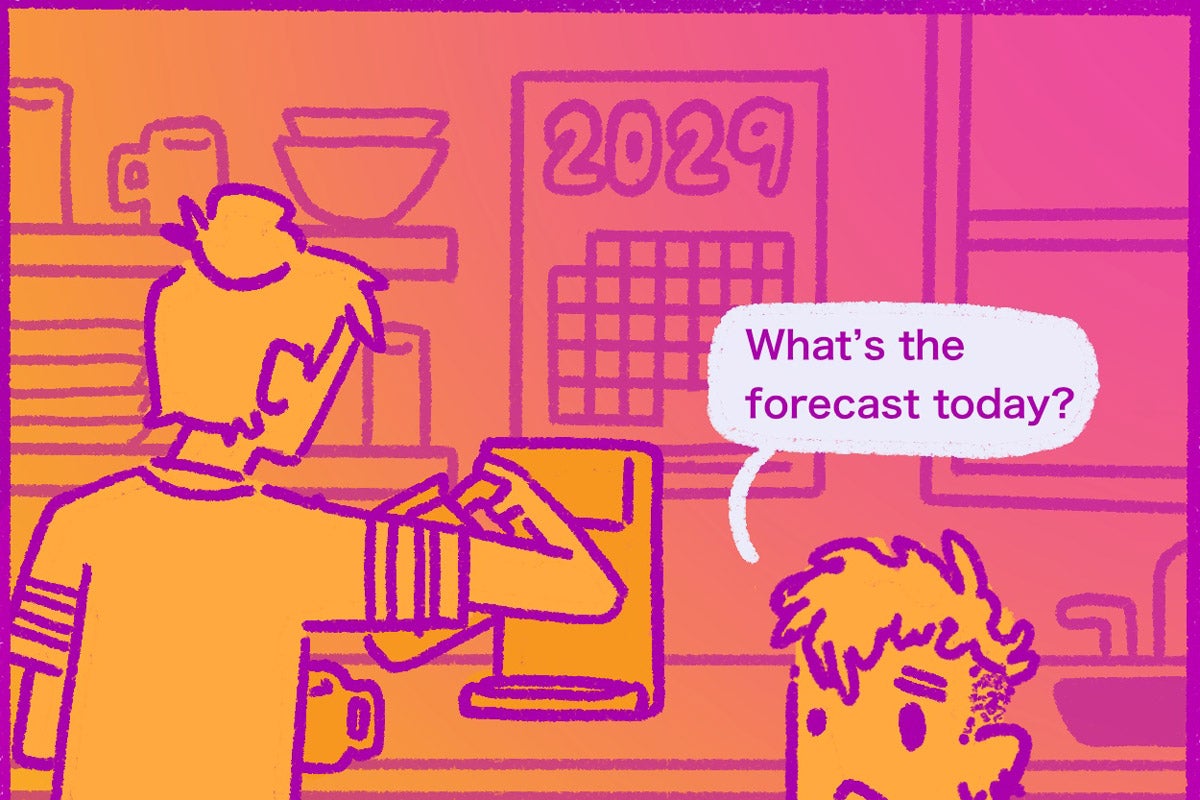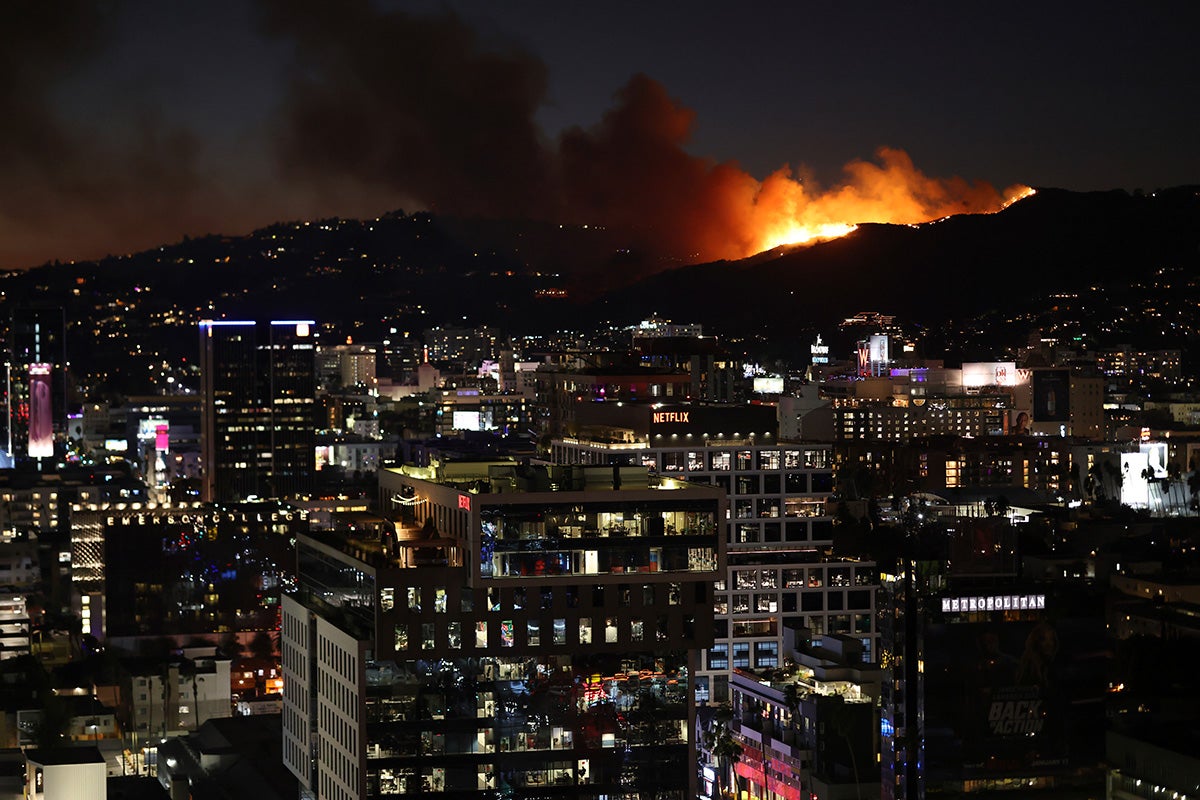
The Sunset Fire erupts in the Hollywood Hills on January 8 in Los Angeles. Mpi34 / MediaPunch / IPX
Feature
The new kind of volunteer firefighter
During the Palisades fire in January—which swept away 11 lives and 10,000 buildings and scorched more than 23,000 acres—a team of volunteers spent 21 days in the field, collaborating closely with the Los Angeles County Fire Department as they evacuated their neighbors, moved flammable materials away from homes, and extinguished ember fires.
The volunteers had prepared for more than a year with the Community Brigade Program, an experimental initiative launched in October 2023. Volunteers trained with firefighters, studied fire behavior and situational awareness, and learned how to communicate during an emergency. “The Community Brigade was instrumental in working alongside first responders against one of the most destructive natural disasters in Los Angeles County history,” Fire Chief Anthony C. Marrone told Harvard Public Health.
The program, prompted by another devastating Southern California blaze, the 2018 Woolsey fire, was designed to equip qualified residents to serve as force multipliers during wildfires. The driving force behind the effort is Brent Woodworth, chairman and CEO of Los Angeles Emergency Preparedness Foundation (LAEPF), a non-profit organization that helps government agencies work with businesses, academic institutions, and community members to mitigate disasters.
Woodworth and his team collaborated with professors from California State University-Long Beach to analyze what locals experienced during the Woolsey fire and teamed up with the LA County Fire Department to understand its needs. Before the Palisades fire, the volunteers helped their neighbors with recommendations to better fireproof their properties. People who took their advice still have their homes, Woodworth says.
“Nothing like our collaboration had happened in the country before,” says Woodworth. But in the aftermath, plenty of people in the United States and beyond want to see it happening where they live. Woodworth has heard from fire chiefs and elected officials from as close as Oregon and as far away as El Salvador. He’s eager to help them: “We’re developing a tool kit so other communities can replicate what we’ve done,” he says.
Woodworth talked to Harvard Public Health about choosing volunteers, supporting firefighters, and helping residents reduce fire risks.
This interview was condensed and edited.
Harvard Public Health: Did you have a hard time recruiting volunteers?
Brent Woodworth: We’d been building the program over a five-year period. We kept community members informed about where we were heading by way of meetings with leaders in public safety, former city council members, and so on. Some of the people who were interested had been involved with ad hoc brigades out of neighborhoods like Malibu West, Point Dune, Topanga—which had helped during the Woolsey Fire.
So the concept of a brigade wasn’t new, but [organizing it] under a government entity like the fire department hadn’t been done. People wanted to join— we had more than two hundred applicants.
We were looking for people with one of two possible qualifications. We wanted people who could operate in the field, which is physically taxing. At the same time, we need these people to abide by all of the rules that apply during field operations. We don’t act without specific requests from the fire department.
We [also] needed people who had experience on the operational or support side—doing communications, logistics, accounting, and so on. We had a lot of good people like that already working with LAEPF, and we found others through our connections.
Then we interviewed people. Those who wanted to work in the field had to do final interviews with our team and one or two fire captains. We [decided] with the fire captains who would be approved, pending background checks.
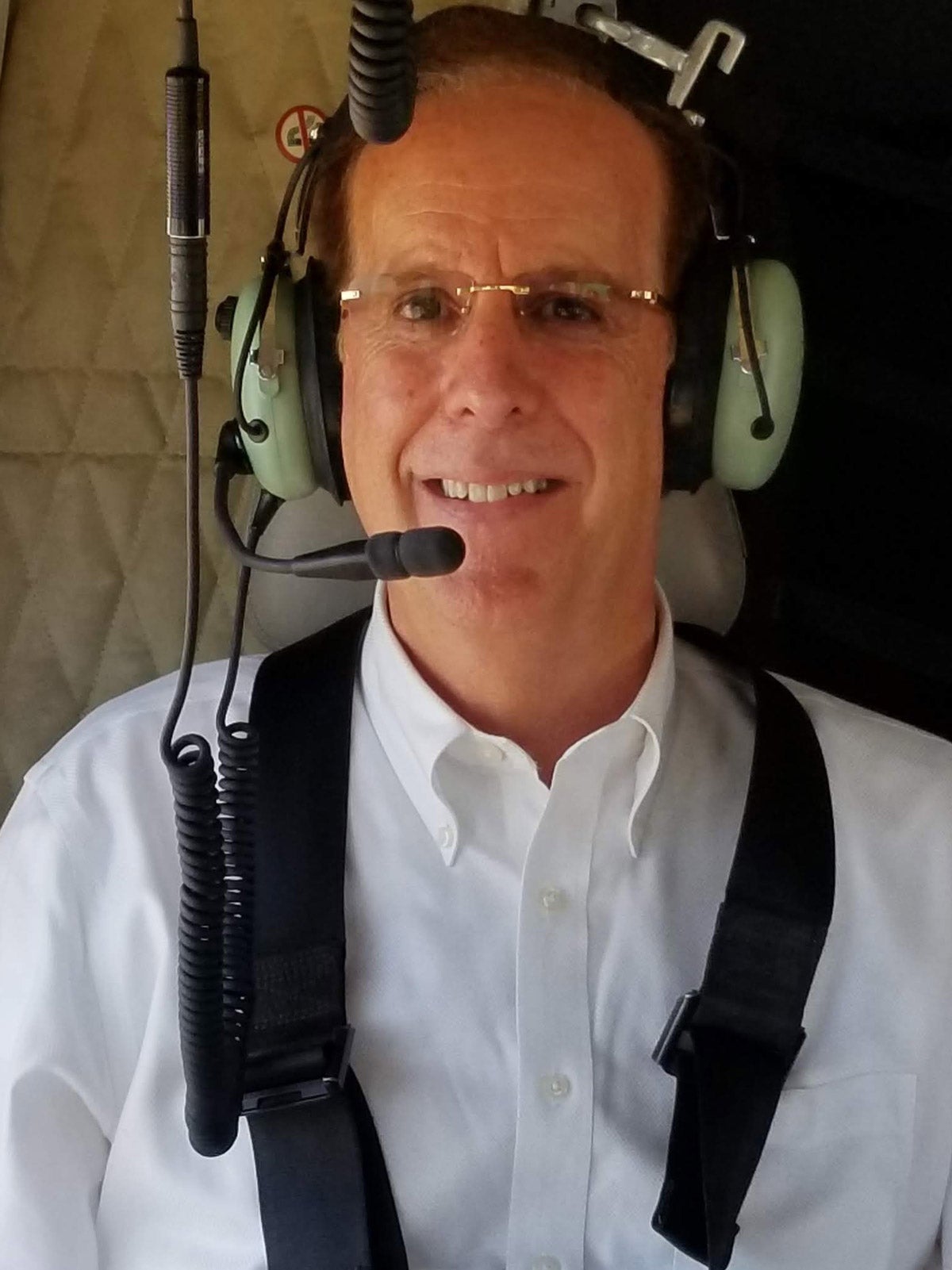
HPH: What kind of training did you give the field volunteers?
Woodworth: They went through 60 or 70 days of training in the classroom and online. They had to pass a number of tests, physical and otherwise, including the Pack Test, [which consists of a 3-mile walk in 45 minutes or less while carrying a 45-pound pack].
Think of putting on every bit of clothing you could possibly wear and getting on your exercise bike and going into a sauna and peddling like crazy. If you can handle that kind of environment, we want you. We ended up with 47 people who were fully qualified.
They participated in a tabletop exercise [to discuss with first responders how they would handle an emergency, and] a deployment exercise on a 100-acre ranch in the Ventura area. We simulated the conditions [they might experience] so they could practice what they would have to do in real time.
HPH: Did the field volunteers have prior experience doing emergency work?
Woodworth: They come from a variety of backgrounds. We have a medical doctor, an EMT, a gentleman who competes in the world’s strongest man competition, and a superior court judge. We have architects, engineers, people from the entertainment industry, former city council members, and former firefighters. We have a woman—I believe she is a retired firefighter—who worked with a helicopter brush crew cutting fire lines through heavy chapparal [to help keep the fire from spreading]. We also have ex-military people and construction workers.
Before the Palisades Fire, our volunteers had responded to two other fires—The Broad Fire [in November 2024] and then a much bigger one, The Franklin Fire [in December 2024]. That was a test for our folks, and they did a great job.
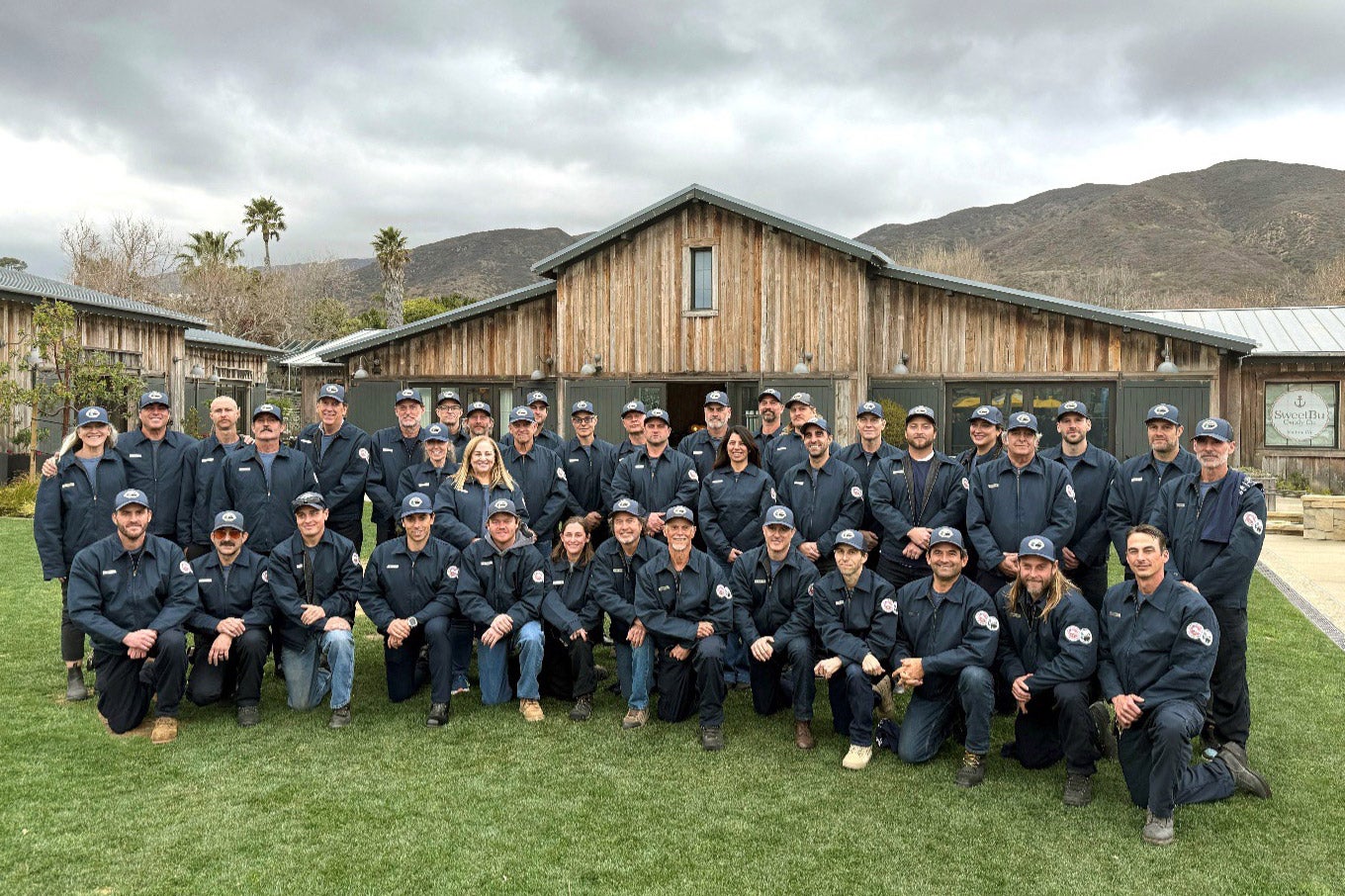
Members of the Community Brigade Program photographed on January 25, 2025.
Laura Hertz
HPH: What do you do to help the firefighters?
Woodworth: During the Palisades fire, we performed a lot of evacuation support: knocking on doors, trying to get people out. We did some last-minute triage—meaning, when the fire was heading towards particular communities, we worked to remove obvious things outside the house that would potentially burn, like cushions, mats, and so on. Moving highly flammable elements away from the house increases its chance of survival.
But saving lives is our number one concern. Because our folks live in the communities they serve, they can sometimes convince people who are not convinced by a general broadcast or message that they should evacuate. They know the streets and the neighborhood, which gives them a level of credibility. They can explain what the level of risk is and say, “It’s not worth losing your life over this.”
In addition to that, we get involved in what some people call mop operations—like extinguishing spot fires and ember fires.
From a humanitarian standpoint, we helped people who needed food, water, or fuel.
We don’t do the job of the firefighters. So we’re not ever, ever, ever entering a house. We don’t put out [burning] cars.
HPH: Will your team play a role in rebuilding after the Palisades Fire?
Woodworth: We want to help individuals, builders, and communities assess their fire risk. We have top-certified experts who can help. They spend an hour or more at a single home, taking photographs, walking the property with the owner, and educating them as to what would catch fire.
We’ve done over 400 of these assessments. We got the word out by going to city council meetings [and talking] to homeowners’ associations. Once we started, people would talk to their neighbors. Many of the suggestions we make about how to mitigate risks are not expensive.
It can be challenging because people will have a beautiful bush growing under their window. But if it catches fire, the window could go—and once a window is gone, your house is pretty much gone. By taking a few precautions, you can reduce the risk of your house burning down by up to 40 percent in some cases.
Woodworth: Terri Lynn Pond
